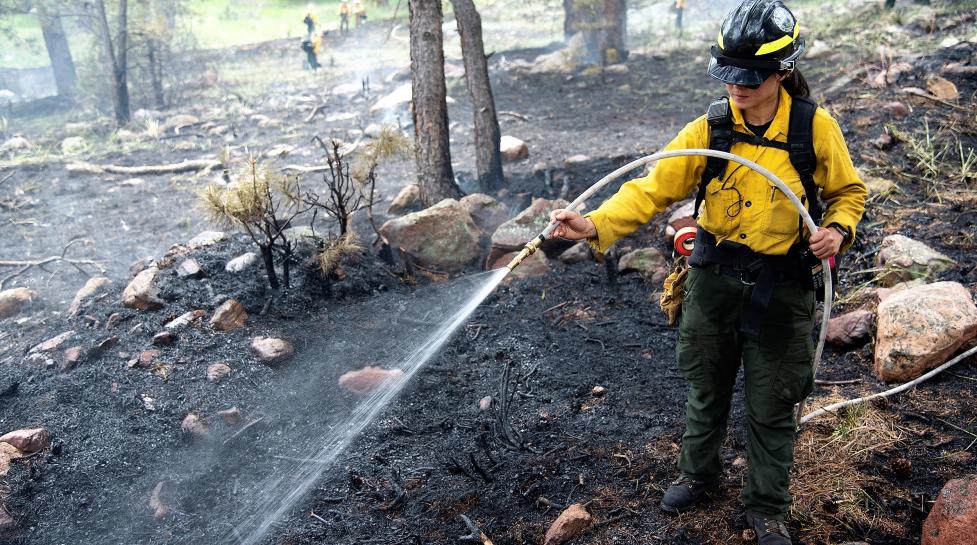Prescribed Burns
Planned burns help to improve the health of open space ecosystems and reduce fire danger for the community
The City of Boulder periodically conducts prescribed burns on open space and wildland areas. The goal is simple - to reduce fire danger for the community and improve open space forest ecosystem health. Conducting a prescribed burn, however, is quite challenging from the planning and supervision to monitoring weather conditions and informing the public.
Prescribed burns are taken very seriously, for good reason. A recent burn of approximately 17 acres at Shanahan Ridge saw than than 50 firefighters and seven wildland fire engines participate. Not only that, there already had been multiple years of prescribed burning, tree-thinning and vegetation removal to help create the necessary conditions for safe and successful prescribed burn.
Here's a quick, high-level look at what goes into a prescribed burn:
- Planning: Every prescribed burn goes through an extensive planning process to consider ecological goals, the resources required, potential fire and smoke behavior, crew logistics, and desired weather and fuel moisture conditions.
- Notifying the community: A wide range of efforts are made to inform the public about planned burns in advance of any ignitions through social media updates, a press release to local media and notification on the city website.
- How are areas chosen for a prescribed burn? Burn selection is always a balance between risk and benefit. The highest priority is public safety. Other major considerations include fuel type, topography and the ability to maintain perimeter lines.
Managed safely and properly, fire is an essential tool for maintaining irrigation ditches and ensuing water flows throughout the system. It also can be used to clear fields, control weeds and improve forage for grazing. Burning also cycles nutrients back into the soil, and results in more dense and diverse native vegetation. Regular burning can also remove small trees that create competition for larger, mature trees in a forest.
Keep Reading
-
City to Conduct a Prescribed Burn Today North of Coot Lake
-
Increased Bear Activity Expected with the Arrival of Spring
-
Body of Unidentified White Male Found in Boulder Creek, No Indications of Foul Play
-
First Responder Safety and Climate Goals are Prioritized with the Purchase of the City’s Second Rosenbauer Electric Fire Engine
